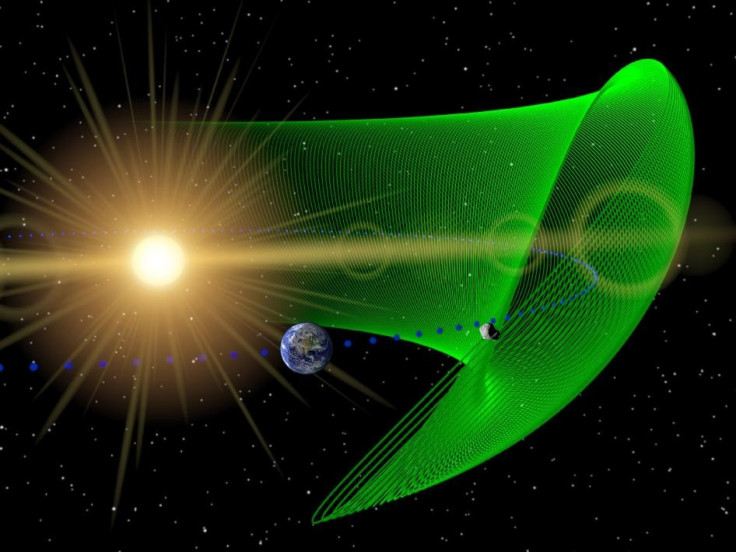First Trojan Asteroid Found in Earth?s Orbit [VIDEO]

Astronomers discovered the first Trojan asteroid circling the sun in Earth's orbit.
Scientists found that the moon has a traveling companion, a Trojan asteroid, which shares an orbit with a planet. These asteroids constantly lead or follow in the same orbit as the planet and never will collide with it, according to NASA.
Trojan asteroids share orbits with other planets in our Solar System to include Neptune, Mars and Jupiter. Two of Saturn's moons share orbits with Trojans, according to NASA.
Scientists have long predicted that Earth has Trojans, but they were hard to find because they are small and from Earth's point of view, they appear near the sun.
"These asteroids dwell mostly in the daylight, making them very hard to see," said Martin Connors of Athabasca University in Canada, lead author of a new paper on the discovery. "But we finally found one, because the object has an unusual orbit that takes it farther away from the sun than what is typical for Trojans."
Astronomers studying observations taken by NASA's Wide-field Infrared Survey Explorer, or WISE, mission made the discovery. The new paper is published in the July 28 issue of the journal Nature.
Connors said WISE was a game-changer.
According to NASA, the WISE telescope scanned the entire sky in infrared light from last January to February this year.
Connors and his team started their search for an Earth Trojan using data from NEOWISE, an addition to the WISE mission that focused in part on near-Earth objects, or NEOs, such as asteroids and comets, NASA said.
NEOs are described as bodies that pass within 28 million miles (45 million kilometers) of Earth's path around the sun. The NEOWISE project has observed more than 155,000 asteroids in the main belt between Mars and Jupiter, and more than 500 NEOs, discovering 132 that were previously unknown, NASA said.
Connor and his team found two Trojan candidates, and one called 2010 TK7 was confirmed as an Earth Trojan. This was done after follow-up observations with the Canada-France-Hawaii Telescope on Mauna Kea in Hawaii.
The asteroid is said to be roughly 1,000 feet (300 meters) in diameter.
NASA said that asteroid has an unusual orbit tracing a complex motion near a stable point in the plane of Earth's orbit, even though it also moves above and below the plane. The fascinating object is about 50 million miles (80 million kilometers) from Earth, and has a well-defined orbit.
For at least the next 100 years, it will not come closer to Earth than 15 million miles (24 million kilometers), according to NASA.
"It's as though Earth is playing follow the leader," said Amy Mainzer, the principal investigator of NEOWISE at NASA's Jet Propulsion Laboratory in Pasadena, Calif. "Earth always is chasing this asteroid around."
But there are a handful of other chunks of asteroids also having orbits that similar to Earth, which could make excellent candidates for future robotic or human exploration, according to NASA.
NASA said asteroid 2010 TK7 is not a good target because it travels too far above and below the plane of Earth's orbit, and would require large amounts of fuel to reach it.
"This observation illustrates why NASA's NEO Observation program funded the mission enhancement to process data collected by WISE," said Lindley Johnson, NEOWISE program executive at NASA Headquarters in Washington. "We believed there was great potential to find objects in near-Earth space that had not been seen before."
© Copyright IBTimes 2025. All rights reserved.






















